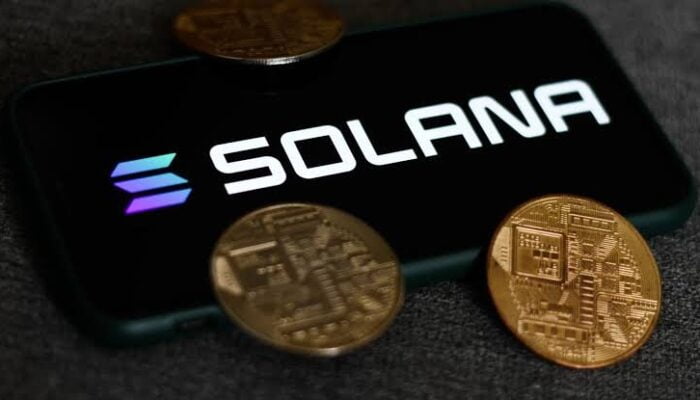Saito introduces a new foundation for Web3.0 by bringing back decentralization and delivering a scalable network. Learn more about how they plan to accomplish that in this article.
Covered:
- What Is Saito?
- Why Use Saito?
- Partners, Backers, & Team
- Tokenomics
What Is Saito?
Saito might have an answer to the question above.
The Layer-1 blockchain project aims to combat centralization within blockchain infrastructure, including node operators and scalability issues that come with proof-of-work and proof-of-stake blockchains.
-----Cryptonews AD----->>>Sign up for a Bybit account and claim exclusive rewards from the Bybit referral program! Plus, claim up to 6,045 USDT bonus at . https://www.bybit.com/invite?ref=PAR8BE
<<<-----Cryptonews AD-----
Saito is a Web3 Foundation grant recipient that allows blockchain applications to run directly on the browser. Instead of going through a centralized node operator paying miners and stackers to create a new blockchain, decentralized applications (dApps) can host their nodes and pay the internet service providers for their network. This protocol saves dApps money and eliminates the free-rider problem and plugins.
Currently, the decentralization-focused chain has a working proof of concept called Saito Arcade. Their arcade aims to demonstrate the power and flexibility of building dApps on Saito. In addition, they recently launched Saito Polkadot Arcade, where users can play games using DOT, KSM, and WND.
Want to play games with #Polkadot Ecosystem tokens? Head now to https://t.co/e4wxrmfdKk and give the arcade a try.#SaitoNetwork $Saito #BlockchainGaming pic.twitter.com/TCjjgeanpj
— Saito Network (@SaitoOfficial) November 8, 2021
RECOMMENDED: THREE TOP PLAY-TO-EARN GAMES ON POLKADOT YOU HAVE TO CHECK OUT
Why Use Saito?
The primary reason to use Saito is that it is decentralized. Everyone relies on the operator’s connection to run with a centralized node operator. Therefore, all dApps depending on the operator, are vulnerable if their nodes are compromised by bugs or external attacks.
It has already happened in 2020 with Infura, a centralized node operator. Infura’s system was locked to an older version of Ethereum and ran into a consensus bug that caused exchanges like Binance and Bithumb to disable ETH and ERC20 withdrawals.
Since dApps built on the layer-1 blockchain can easily and cheaply host their own nodes, it is naturally decentralized and rid the worries of a mass compromise on a centralized network.
Apart from decentralization, the protocol also has a below-zero cost-of-attack. By ensuring the production of blocks to be expensive, attackers must pay out-of-pocket and are guaranteed to lose a lot of money in an attempt to produce a block. Honest nodes are not affected since they pay the costs with fees collected from their users.
https://t.co/7ADpkPN4nI$SAITO #blockchain #saito #saitoConsensus #web3 pic.twitter.com/yZHGhCpYe5
— Saito Network (@SaitoOfficial) November 18, 2021
More Key Benefits
- Powerful Blockchain: It supports data-intensive apps like games and social media.
- Open Infrastructure: It pays for infrastructure that connects blockchains to users.
- Polkadot Ecosystem: It provides full support for Polkadot and other leading Web 3.0 blockchains.
- Web Dapp Platform: It provides an easy-to-use dApp platform so developers can immediately get started.
- Browser Support: Saito apps run directly in the browser, without closed plugins or private API providers.
- Anti-Monopolistic: There is no shortage of connection points because anyone can start a node, and access points make money servicing users.
- Open-Source: It is a decentralized open-source software stack powered by a stylish economic design.
- Reward its nodes for running the equipment to keep other networks free and decentralized.

Partners, Backers, & Team
Saito has some partnerships that entice developers to start developing on Saito. For example, Elrond has jumped in to help developers use tokens on the Elrond network in web applications and games running on Saito.
StackOS also makes it easier for Saito developers to get applications and edge-nodes running. Other partnerships include Genesis Block OTC, Mixin Network, and iME.
The layer-1’s two co-founders David Lancashire and Richard Parris, have more than ten years of experience in the technology space in China. Clayton Rabenda is leading the team of software engineers at Saito to implement their vision of Web3.0.
The team is expanding and hiring for more positions, with approximately half of the current team based in Asia and the rest distributed through Spain, South Africa, and South America.
The protocol also has prominent investors, including OKEx Blockdream Ventures, Master Ventures, and A195 capital.
RECOMMENDED: THREE TOP DEFI PROJECTS ON HARMONY YOU NEED TO CHECK OUT
Tokenomics
The use case for SAITO tokens is similar to how ETH works on Ethereum. The main point is for accounts to spend them in exchange within the network for data services.
There are two types of SAITO available. Layer-One SAITO is the on-chain token used with the Saito network. The ERC20 version (wrapped SAITO) token allows for permissionless integration in off-chain applications.
ERC20 can be converted back to Layer-One SAITO, but not the other way around. At the moment, only ERC20 SAITO is available for public purchase. The token is listed on Uniswap, Gate.io, BKEX, BigOne, Lbank, and Hotbit.

Token Distribution:
- Foundation: 20% for community distribution and management and oversight.
- Core Team: 15% to compensate early developers and network creation in the first three years of network development.
- Contributors/Devs: 15% allocation to fund software and network developers working on the core protocol.
- Rewards: 15% funds for token faucets, airdrops, and other incentive programs to build community.
- Strategic Partners: 10% pool to subsidize on-chain transaction and development costs for third-party companies investing their resources in building PKI applications on the Saito network.
RECOMMENDED: HOW TO USE UNISWAP V3
Concerns:
Saito aims to shift blockchain technology back to decentralization. Even though this is probably music to many new developers’ ears, they still need to convince many well-established dApp projects to make the switch. Would it be worth it for these projects to move to the layer-1 protocol, considering it’s still developing with an unclear roadmap and the mainnet launch scheduled for April 2022?
Any project in development faces the same issue of potential roadblocks that may disrupt the launch date. Nevertheless, this project can potentially change the foundation of Web3.0 if successful, so it will be interesting to see how it continues to develop.
The post What Is Saito? appeared first on CryptosRus.
https://cryptosrus.com/what-is-saito/feed/





